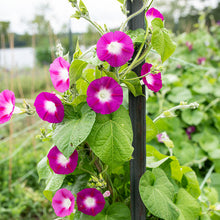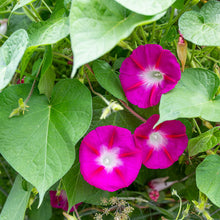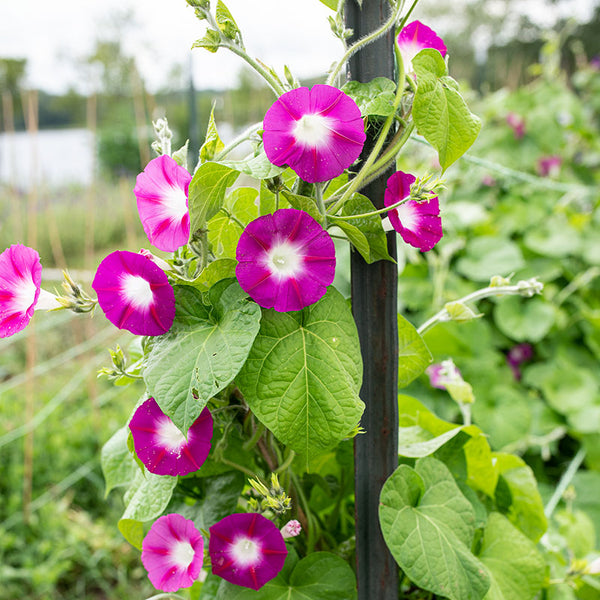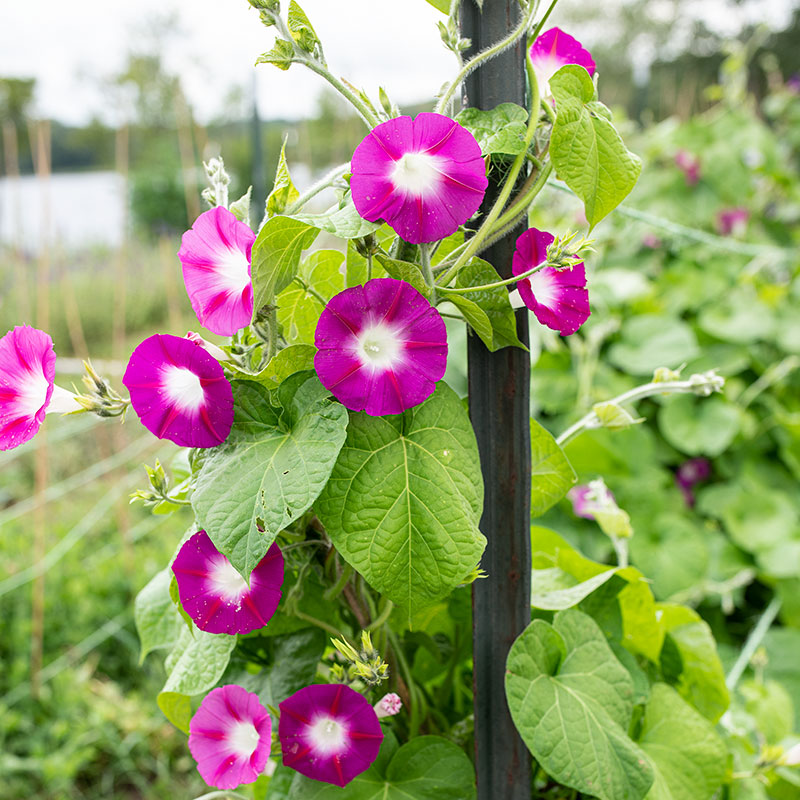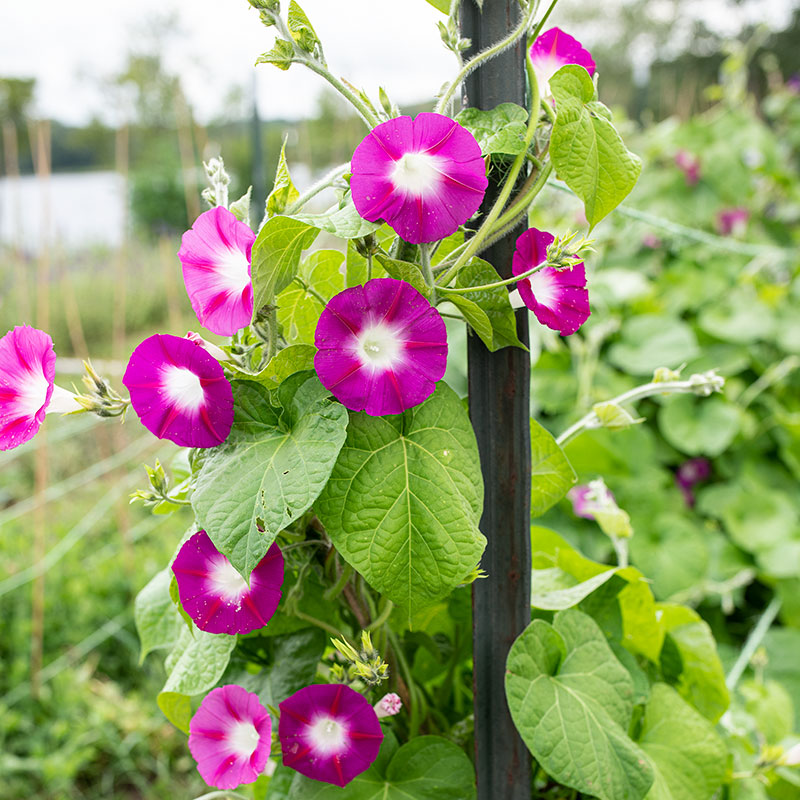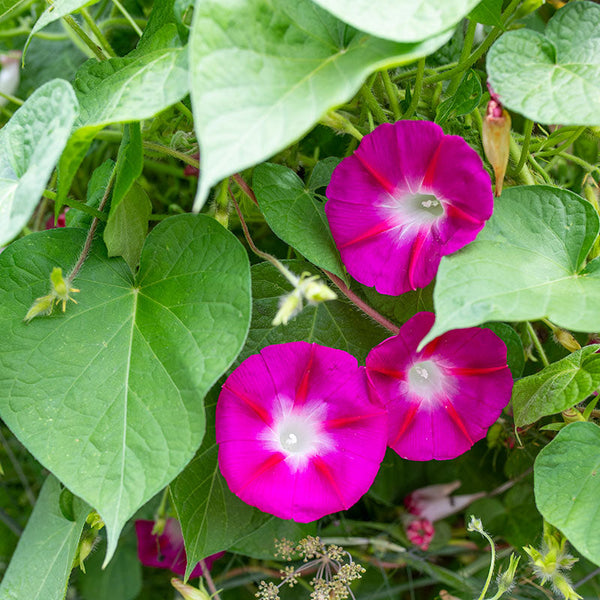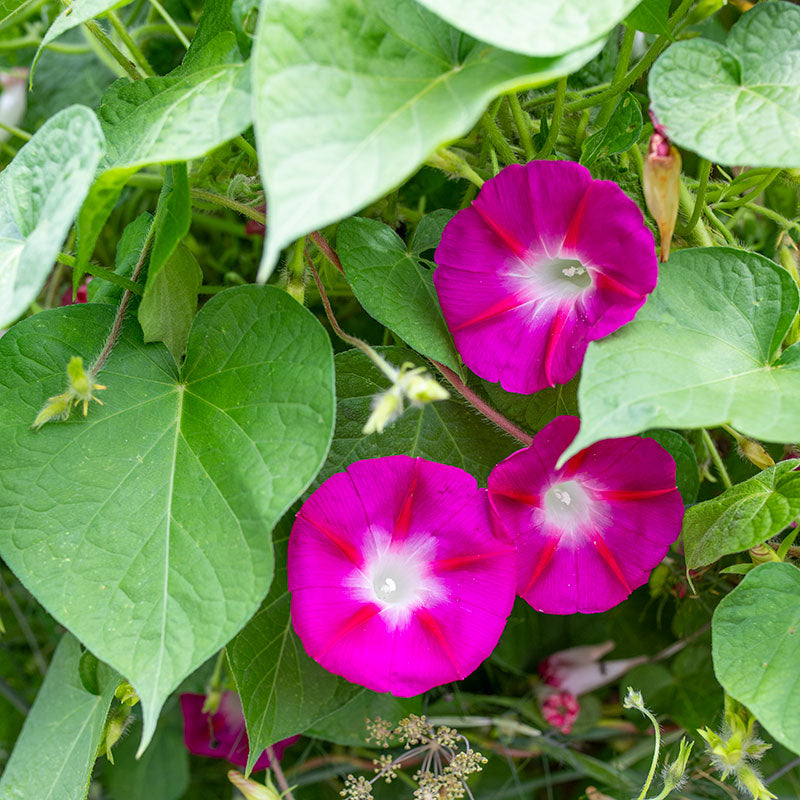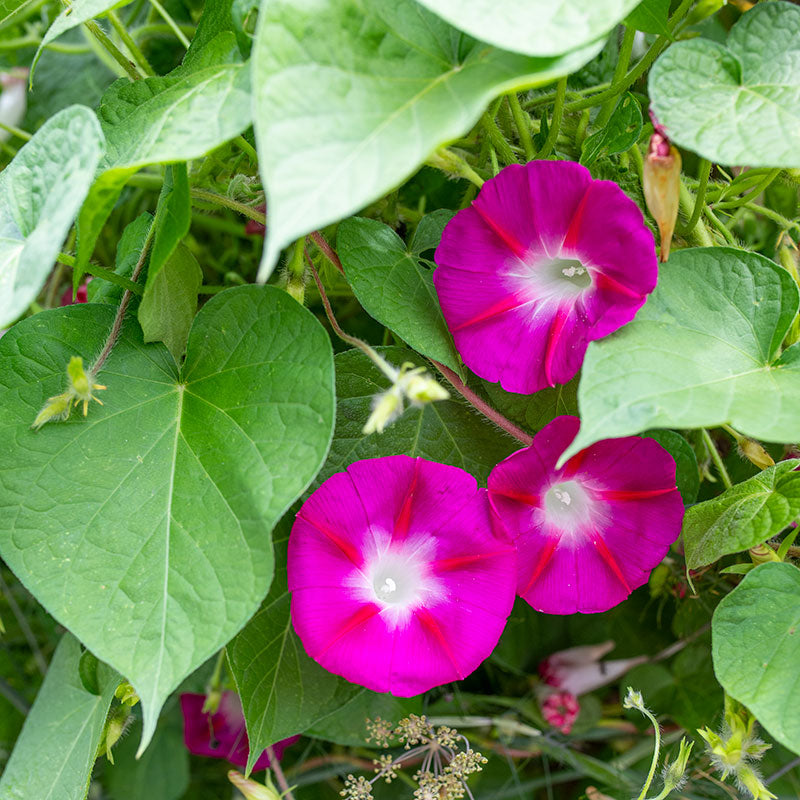SOWING INSTRUCTIONS
Depth:
1/4-1/2" Tip: Nick or file the seed coat prior to soaking seeds in warm water for 24 hours prior to sowing.
Seed To Bloom:
12-14 weeks
Starting Indoors:
Sow in pots about 4 weeks before last frost. Keep at 65-80°F. Cover with humidity dome to retain moisture until germination occurs.
Starting Outdoors:
Direct sow about two weeks after last frost.
WHEN TO SET OUTSIDE
After last frost, when soil has warmed.
PLACEMENT & CULTIVATION
Crimson Rambler' morning glory is a charming, old-fashioned twining vine with smaller flowers than the large saucers of I. tricolor–it's exuberant and abundant blooming more than compensates. Provide a tall trellis or fence for it to twine about. The blooming period begins in mid-summer and extends until the arrival of fall frost, the flowers staying open all day in cloudy weather or in the fainter light of fall. Caution: seeds contain some toxic alkaloids.
Watering Details:
About 1" per week, more during especially dry, hot spells. Drought tolerant when fully established.
Soil pH:
Slightly acidic to slightly alkaline.
Fertilizer:
Mix in 2" of compost prior to planting and apply a flower fertilizer at bud set for more abundant blooming. Avoid nitrogen fertilizers that favor foliage growth over flower development.






























